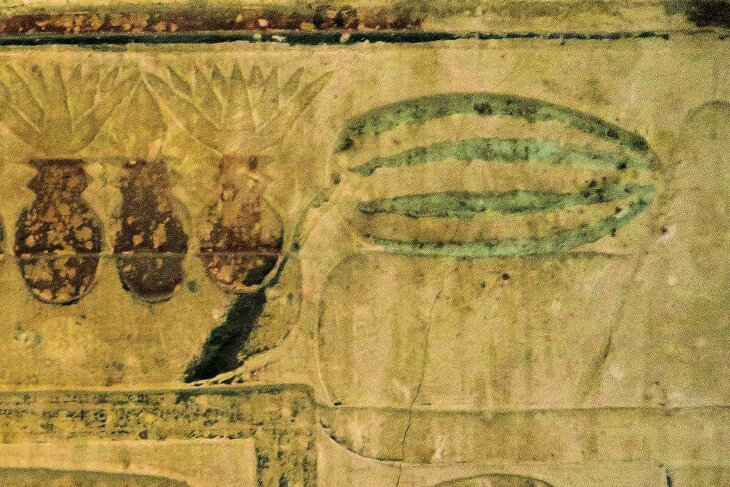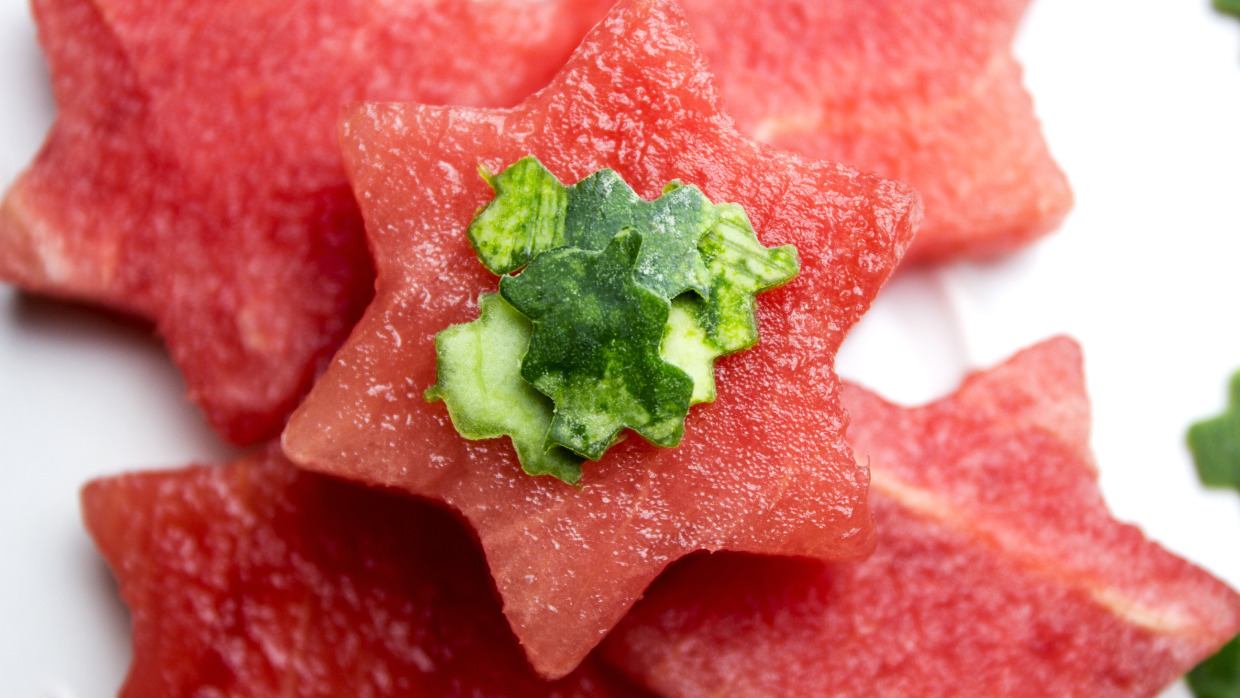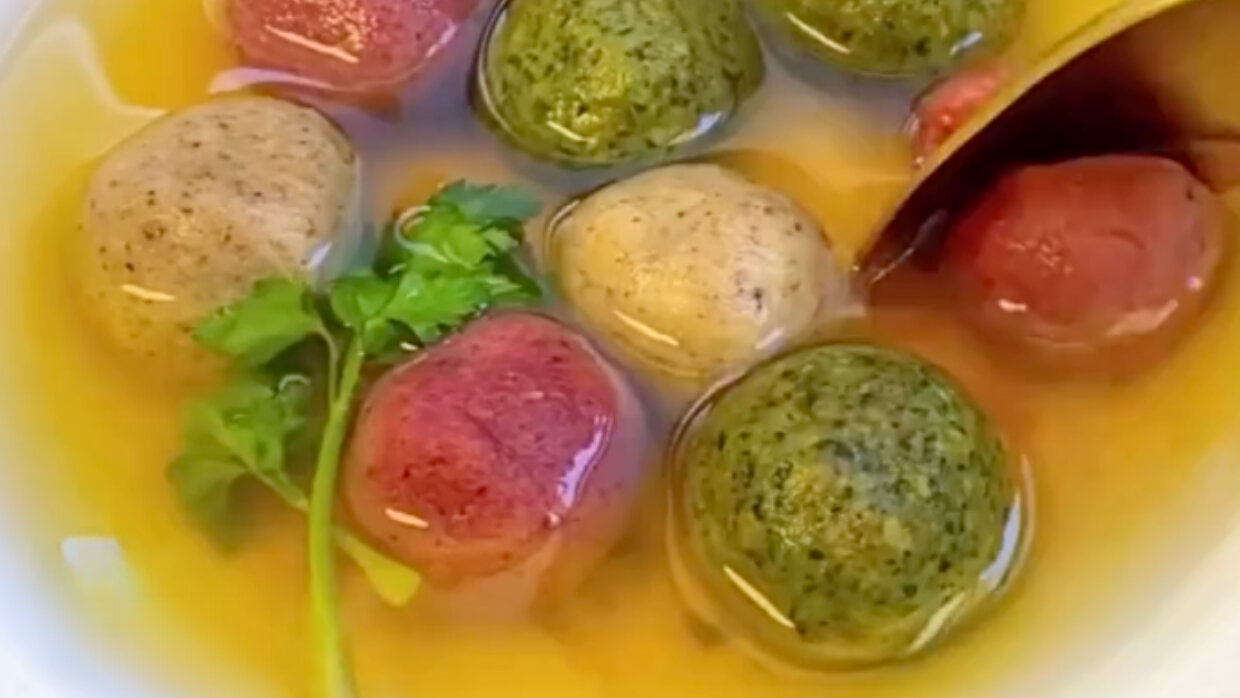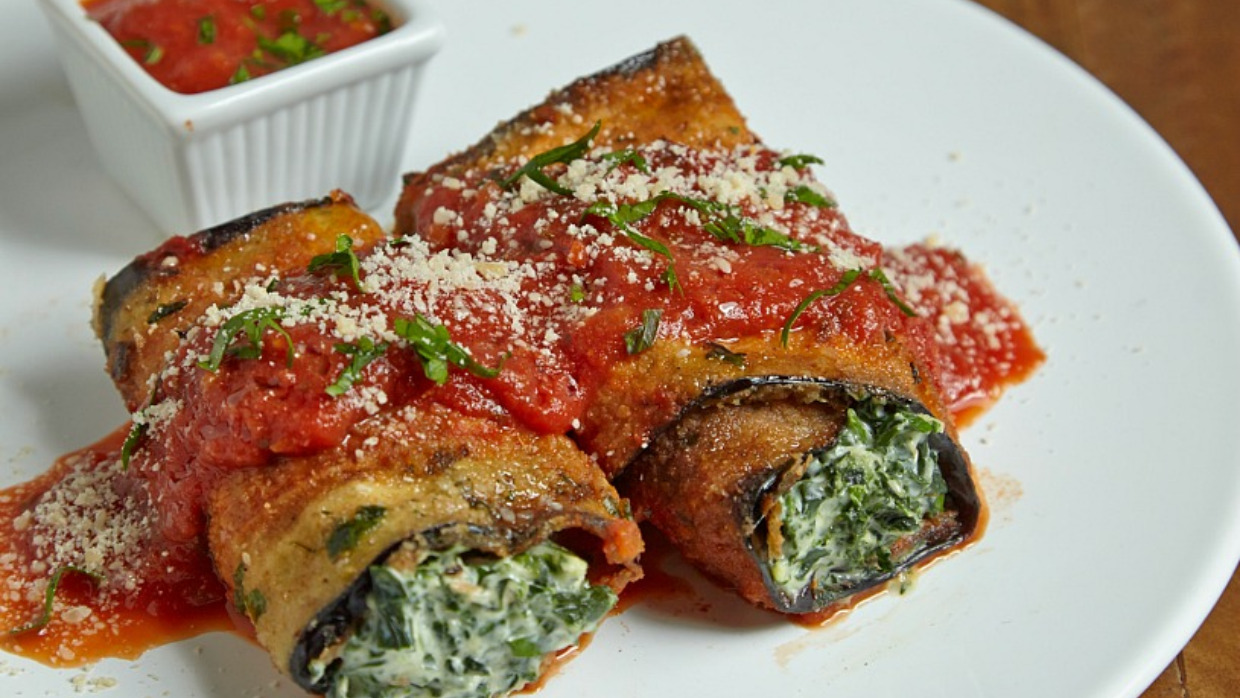Watermelons have emerged as the newest front in the Arab-Israeli conflict. Since Hamas’ brutal attack on Israel on October 7, 2023, the fruit has become a symbol of Palestinian support and anti-Israel sentiment. As the New York Times notes, “On and off social media, watermelons are being used as a symbol to communicate solidary with Palestinians.… The watermelon emoji appears next to the Palestinian flag in display names on TikTok and X….”
The origin of why is murky. The New York Times interviewed a number of anti-Israel leaders and never got the bottom of how watermelons became a symbol of anti-Israel sentiment. People recounted differing versions of a story in which an Israeli soldier angrily told a collective of Arab artists they were forbidden from using any of the colors of the PLO flag (red, green, black and white). In some versions of this now-legendary, unsubstantiated story, the artists cleverly subverted the supposed ban by painting watermelons, which share the same colors as the PLO flag.
Today, the Washington Post notes, anti-Israel protestors use watermelons as a code on social media “arguing that these are necessary to avoid their posts being suppressed by tech companies” weeding out posts that call for violence.
Watermelons’ newfound politicization is a shame; watermelons are enjoyed throughout the Middle East by people of all nationalities and religions and are too delicious to become a symbol of anti-Jewish hate. Here are six Jewish facts about watermelons from ancient times to today.
An Ancient Treat
Watermelon - called avatiach in Hebrew - originated in Africa; they still grow wild in Sudan and nearby countries. Originally a small, bitter fruit with a flesh that was a paler green than today’s, watermelon began to be cultivated about 5,000 years ago, first in northern Africa, including ancient Egypt.
Watermelon seeds have been found in 5,000-year-old ruins in Libya; paintings of watermelons adorn the tombs of ancient Egyptians, including King Tut’s. In at least one ancient Egyptian tomb, a watermelon painting shows a modern, cultivated version of the fruit resting on a plate, instead of the paler wild variety. Archeologists hail this as proof that a version of the sweet watermelons with deep red flesh and dark green striped rinds which we enjoy today date back thousands of years.
 Watermelon depicted in ancient Egyptian tomb
Watermelon depicted in ancient Egyptian tomb
Nostalgia for Slavery in Egypt - and Watermelon
Like other residents of ancient Egypt, the ancient Jewish slaves ate watermelon as a major part of their diet. Perhaps the most famous mention of watermelon in Hebrew literature is in the Biblical episode when the Jewish people, having been freed from slavery in Egypt, complain that even though they were slaves back in Egypt, at least food was plentiful.
Watermelons were one of the main foods the ancient Israelites missed. “We remember the fish that we ate in Egypt free of charge, the cucumbers, watermelons (avatichim), leeks, onions, and garlic,” (Numbers 11:5) the ancient Israelites complained to Moses.
Watermelon in the Talmud
A nutritious source of vitamins and water, watermelon began to be cultivated in the Middle East, including in the Land of Israel, about 3,000 years ago. A picture of an ancient watermelon was found in the remains of a mosaic in north of Israel depicting a cut open watermelon displayed as part of a feast.
The Talmud mentions watermelon numerous times; it seems to have been a commonly eaten fruit throughout the Land of Israel. For taxing purposes, the Talmud groups watermelon with other sweet fruits including pomegranates, grapes, and figs. (Jerusalem Talmud Maasrot 2:4:1) For Dr. Harry Paris, a researcher in Israel’s Agricultural Research Organization, this indicates that watermelons were eaten as a dessert in ancient Israel, prized for their sweet taste more than any nutritional benefits. He notes that ancient Israeli mosaics indicate that these ancient sweet watermelons had more of an orange flesh rather than the red of watermelons today.
Though it’s a fruit, the Jewish blessing for watermelon is the blessing for vegetables, since watermelons grow on the ground:
Baruch Atah A-Donoi, El-Oheinu Melech Ha-Olam, borei pri ha-adamah.
Blessed are You, Lord our God, King of the Universe, Who has Created Fruit of the Ground.
Jewish Merchants Introducing Watermelon
Jewish traders introduced many new fruits and vegetables to Europe and the Americas, including watermelon. Food historian Gil Marks notes that “According to some historians, it was medieval Jews who first introduced watermelon cultivation to France.” (Quoted in Encyclopedia of Jewish Food by Gil Marks: 2010) In the Caribbean, it was Jewish farmers who first grew watermelons in the New World in the 1600s; from there, they exported the watermelons to Europe and the Americas.
Watermelons got a big boost in the 1960s in the US when a Jewish fruit wholesaler in Frieda Caplan began marketing a new Japanese breed of watermelons with very few seeds.
 Frieda Caplan
Frieda Caplan
Born in Los Angeles to Jewish immigrants from Russia, Frieda began working at her husband’s family’s wholesale fruit and vegetable distribution business in 1955. Frieda was one of the only women in the industry, and other wholesalers used to send representatives selling strange or exotic produce her way. Frieda had a knack for marketing new items - she’s renamed Chinese gooseberries “kiwifruit” - and she soon became a major broker for unusual items. Frieda opened her own fruit and vegetable import business in 1962, helping popularize many items we now take for granted in the United States including jicama, Champagne grapes (Frieda invented the name to replace Zante currants), spaghetti squash - and “seedless watermelon”.
Israeli Watermelon Innovations
Watermelon is one of Israel’s most popular foods: over a third of Israelis proclaim it their favorite fruit. Israelis eat about 119,000 tons of watermelon each year; that’s a whopping 12 kilos (over 26 lbs.) per person.
Israel’s watermelon production is increasing, thanks to major new Israeli innovations in growing the fruit. New Israeli varieties require substantially less water and fertilizer to grow. Israel is also a pioneer in growing watermelon indoors, protecting the plants from insects and plant diseases. Once just a summertime treat, Israeli growers now harvest watermelons nearly year-round. .
Watermelon, Israeli Style
Given its ubiquity in Israel, watermelon is used in everything from salad to soup in Israeli kitchens. Some hotels and restaurants even serve watermelon jam as part of breakfast. The most popular way to enjoy watermelon in Israel, however, is an import that came to the Land of Israel along with Bulgarian Jewish immigrants: watermelon salad enjoyed with salty, crumbly feta or Bulgarian cheese. Occasionally combined with fresh mint or basil, avatiach salat (“watermelon salad”) is one of Israel’s most popular dishes.
A delicious recipe for this ubiquitous Israeli salad is provided by cookery writer Jessica Halfin: https://www.hadassahmagazine.org/2018/07/31/watermelon-feta-salad-basil/
Watermelons are too delicious - and too engrained in Jewish cuisine - to let them be hijacked by anti-Israeli activists. While watermelons aren’t in season in much of the northern hemisphere today, let’s all resolve to enjoy this delicious treat - and to be conscious of Jews’ contribution to watermelon growth and distribution - while we do so.















TRUTH IS 1 OF THE BEST WEAPONS AGAINST ANTISEMITISM
thinking of taking a king sized sharpie to the supermarket and bringing a watermelon with a large Star of David on it home…thank your sharing
Thank you for that tasty and informative blog. I'm a New York Jew and write a food history blog. Check it out at https://jerifink.com. I think you will enjoy it. I have also authored many Jewish-themed books and novels. Perhaps you might want to share your thoughts.
😊wow
Thank you for teaching me all that! Yes we should not let watermelons or anything else be hijacked or misappropriated by ANTI Israel haters.
Many weeks ago when I first heard of the Palis comparing the colours of watermelons to their flag, my first thought was that I would not be able to eat watermelons again without having a bad taste in my mouth. And, without feeling anger for what the terrorists did. Lauren, you are right - we should not them hijack watermelons or anything else. Reading this article helps.
Am yisrael chai.
Very timely article. Let's not forget the pickled watermelon variety in our historical menu, too!